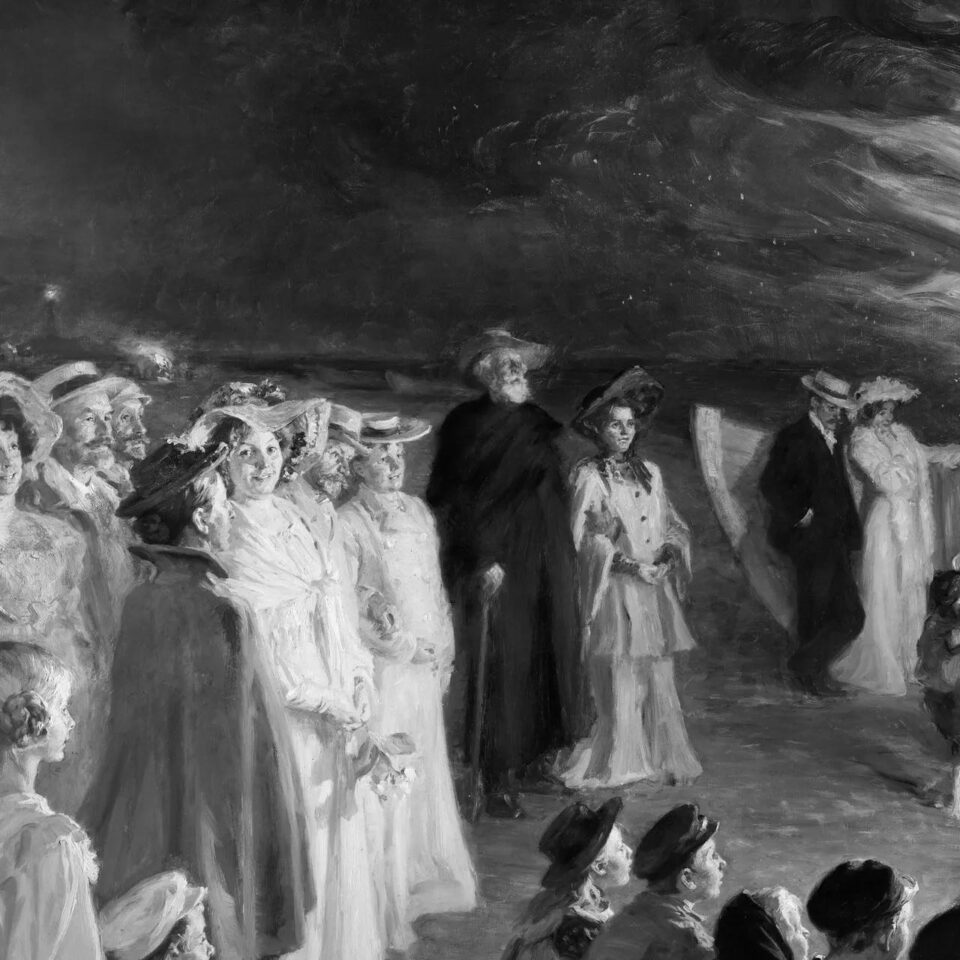FLOOD’s weekly Pop Culture Cure offers an antidote—or five—to the most upsetting developments of the past week. (Because therapy’s expensive, and entertainment’s not.)
A new adaption of Ben-Hur released this week. Thank God for that, said the blasphemous ghost of a Civil War general and literally no one else. Ben-Hur is not receiving positive notices, and indeed it has very little going for it beyond its title—but sometimes that’s all it takes for a film to get made. Name recognition is big in a crowded marketplace. (Which is why I named my son King Arthur Titanic Hannibal Harmon, Jr. (my dad was smart too).)
I think it’s fair to say that adaptations and remakes only ever happen via love or money. But they only ever work if the love is there. (And not always then.) Without a passion for the original artwork, there’s no drive to provide anything other than fidelity. If you want fidelity, stick with the original artwork; there’s nothing truer than that. But if you’re a real fan of something, you usually want something more. You want a response to the gauntlet that the original artwork has thrown.
That’s what this list is all about: movies, books, and TV shows that sought to honor the past by engaging with it, not imitating it. Because literal adaptations are for people who want to save time on their book reports. Spiritual adaptations, however, are for those who want to reckon with an artwork’s very soul.
This is for that more spiritual crowd. Let’s get loose.
Donnie Darko (2001), directed by Richard Kelly
An adaptation of: Martin Scorsese’s film The Last Temptation of Christ (with a bit of Graham Greene’s “The Destructors” thrown in as well)
Key distinction: The Christ in question here is an ’80s teen with a hard-on for Smurfs and annihilation.
Donnie Darko was Richard Kelly’s first feature-length film, and it has a fresh-as-hell soundtrack, and it has a cult following, so this film comes to us now somewhat overhyped, despite its modest upbringing. But it’s a mistake to think of Donnie Darko as a gimmick, as a clever means of cashing in on our budding 1980s nostalgia (which tendency has recently come to a head with Stranger Things). Because Donnie Darko is, for all its playfulness, a deeply coherent film.
Even if you miss The Last Temptation of Christ (along with The Evil Dead) on the local theatre marquee, the hints are all there. This is a movie about a kid who can only save his family if he allows himself to be destroyed. And who is only able to see the wisdom of that act after being tempted into the alternative course by the devil, by which I mean a menacing figure in a giant bunny suit. (There are a lot of references here, okay!?)
Graham Greene’s story “The Destructors” also plays an important thematic role here. That (immaculate) story also concerns itself with the creative power of destructive acts, and finds a kind of aesthetic echo in the strains of “Mad World” at the film’s end. Because even when we are saved, Christ is still dead. (Sorry ’bout that, Gyllenchrist.)
Barry Lyndon (1975), directed by Stanley Kubrick
An adaptation of: William Makepeace Thackeray’s novel Barry Lyndon
How it’s different: It’s a movie, dummy.
So this is more straightforward. Barry Lyndon the movie is an adaptation of Barry Lyndon the book, and the movie follows the plot of that book very closely. The difference here is Stanley Kubrick. Kubrick adapted literary works throughout his career, but like the Coen Brothers, he rarely did it simply, and he never did it unreflectively. In this case, although he certainly made a stylized costume drama, as might be expected, he also made a movie that was as much about the distinction between words and images as it was about the ladder-climbing Irishman-cum-gentleman-cum-disgrace Barry Lyndon. And that’s really the only way that Kubrick could ever have made a movie that was “true” to the original, because fidelity was, if anything, a dirty word to him. But Thackeray wrote subversive novels that read like genre fare. And Kubrick used the trappings of the costume drama to examine the ways in which his medium was novel, and the ways it was not.
To put a finer point on that: Barry Lyndon’s last scene shows him, now short all of his former wealth and much of his left leg, marching into a carriage that is to take him out of England forever. He is, in other words, disappearing before our eyes. But his disappearance is not the sudden vanishing of the novel; here, instead, he is disappeared when the film ceases to roll: by a freeze frame. Then narration takes over, telling us what will happen to him. But this is a movie, and he is already gone.
I don’t know what the best death in fiction is, but I do know that that is the best death in film. Lyndon, here, is killed by the intrusion of the book itself, but that meta-death doesn’t keep his fate from being utterly devastating. (The score may have something to do with that as well.)
The New World (2005), directed by Terrence Malick
An adaptation of: Wagner’s opera Das Rheingold
How it’s different: Wagner’s all ’bout that Germany, but Malick’s all about that ’Murica!
Speaking of scores, it’s hard to do better than Wagner. The New World tells the story of John Smith, Pocahontas, and a very young America, and it scores that very American story (of pluck, redemption, guile, and greed) with a very German soundtrack indeed: the first work in Wagner’s proto-LOTR masterwork Der Ring des Nibelung. That may seem like an odd match at first, but it works. Malick uses Wagner’s music—and his libretto—as a spur to focus first on the great American theme of running water (cf. Finn, Huck; Dick, Moby) and second on the great motivating factor of greed. I had never heard the opera prior to watching the film, but as with The Thin Red Line, I was soon scrounging every scrap from the film for those sparks of beauty that it cast off without so much as a second glance. And this is the greatest of all possible scraps. The New World is a problematic work of magisterial beauty, as is its progenitor. But I defy you to watch that opening scene and not finish the movie. And I further defy you to watch the movie and not want to see the opera. The maps lay on top of one another like the maps of the twentieth century lay on top of the maps of the seventeenth. You see the similarities in the shadows, in the darkness.
There are a few works that I think strive to capture the all of America. It’s odd to think, but this is one of them. That said, there are a lot of Germans in America. (For good as well as for ill.)
Tristram Shandy: A Cock and Bull Story (2005), directed by Michael Winterbottom
An adaptation of: Lawrence Sterne’s novel The Life and Opinions of Tristram Shandy, Gentleman
How it’s different: Sterne was PoMo before PoMo was cool; Winterbottom is late to the scene but hip to the same beat.
This movie is about as meta as one can get without jumping onto a literal shark that is jumping over another shark that is housed for all eternity inside a metaphorical tank of LaCroix. I urge you, above all else, to watch it. But if you don’t have the time, suffice it to say that it takes us behind the scenes of a modern production of an adaptation of Tristram Shandy that is beset at all sides by contentious stars, intrusive experts, and lots of other stuff too. It should also be said that this is intended as a film version of an unfilmable novel, but that “unfilmable” here seems apt, as is so rarely the case. Crash, for instance, is filmable, because it has sex and car crashes. Shandy, however, is not, because it has neither, nor a plot, nor a main character.
And yet this movie does the thing and brings Tristram Shandy to life. Not the character, mind you, but the work. Winterbottom makes his connection to Sterne’s work through his own yearning for the self-referential films of the past: for 8 ½ and the past films of the actors who play the characters in this film. Celebrity is the new oversized set is the new overburdened consciousness. And that all rings true without sacrificing anything in the way of laughs or poignancy,
And you know you’re in the presence of genius(es) when the credit sequences also operate as a commentary on truth, celebrity, authenticity, and the right way to convey late stage Al Pacino.
https://www.youtube.com/watch?v=HuF4rtqfYDs
Jean de Florette and Manon of the Spring, directed by Claude Berri
An adaptation of: Sophocles’s Oedipus Cycle
How it’s different: It’s set on a small French farm in the twentieth century.
There have been two times in my life when I cared a lot about rabbits. The time I saw Jean de Florette was one of those two times. (The other time was when I read Watership Down, in case that wasn’t obvious.)
Five hours after I first pressed play—five hours after thinking I was putting on a lovely, neo-realist–inflected meditation on life on a French farm in the 1930s—I gaped at Manon of the Spring in horror, as I realized that, holy god, the fates and the furies were up in this bitch, and it had just come time to pay the piper.
I’ve watched this duology twice more since then and have never not been shocked. FL









